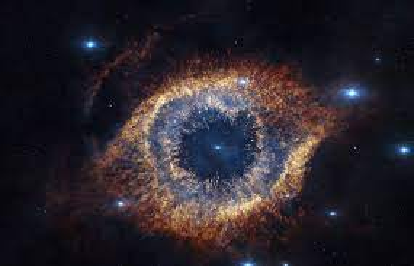“Normal” stuff is optional.
Source: Space.com
Want to take a stab at unraveling the biggest mysteries of the cosmos? Let’s start by exploring the basics of cosmology, the study of our entire universe. Yes, that’s a real job — and yes, you can understand it, too.
If you’d like to “bake” a universe, you need two essential ingredients and one optional ingredient. To get the cosmos we know, you need around 25% dark matter and 70% dark energy. Dark matter is some form of matter that is completely invisible; whatever it is, it doesn’t interact with light. We don’t know exactly what the dark matter is made of, but we do know it’s there through its gravitational machinations and interactions with everything else.
Besides the dark matter, you’ll need big heaps of dark energy, which is even more mysterious. Dark energy is the name we give to the observed accelerated expansion of the universe — that is, that the universe is getting bigger at a faster rate with every passing day. We suspect that dark energy has something to do with the vacuum of space-time itself. In other words, if you had an empty box, devoid of all matter and radiation, you would actually have a box full of dark energy. But beyond that niggling suspicion, we’re stumped.
That’s basically it: With enough dark matter and dark energy, you can account for 95% of the contents of the universe for most of its history.
So, what about that optional ingredient? That’s all the normal matter — what cosmologists call “baryonic” matter — like protons and neutrons. It’s all the stuff that assembles into atoms and molecules, people and planets, stars and galaxies. All the visible matter of the universe doesn’t really matter. But it does make for pretty lights in the night sky, so that’s a nice bonus.
The dark web
This is the present-day universe: a bit of normal matter, lots of dark matter and a giant load of dark energy. The dark energy is busy ripping the universe apart at the seams but otherwise doesn’t really participate in day-to-day cosmological life.
The dark matter clumps together into a vast, complex, web-like pattern — called the “cosmic web.” There are giant balls of dark matter a million or more light-years across. There are long ropes, or filaments, of dark matter stretching between those balls. There are incredible deserts — the cosmic voids — with almost absolutely nothing in them at all. But other than providing the backbone of structure in the universe, the dark matter doesn’t really do anything else. It’s dark, after all — incapable of interacting with light — so it just sort of sits there.
The small amount of normal matter is trapped in that dark web. Small clumps of dark matter, called halos, host a single galaxy. The giant balls host multiple galaxies — what we call a galaxy cluster. The filaments are home to chains of galaxies caravanning through the light-years.
The cosmic web is the single largest pattern found in nature, filling the entire observable universe (and probably then some; but by definition, we can’t see any further). How big is that observable universe, you might ask? Current estimates pin it at around 90 billion light-years across, though the true size of the universe is probably much, much grander.
The backstory
So how did the present-day universe come to be the present-day universe? How did we get all this dark matter arranged in a giant cosmic web? Well, a hundred years ago, we made a remarkable discovery, before we even knew about all the dark stuff going on: The universe is expanding.
Every day, galaxies are getting farther away from one another (on average, that is; an occasional galactic crash is totally possible). This means that the universe was different in the past, and much different in the ancient past. Cosmologists can wind back the clock to when everything in the universe was scrunched up into a very tiny, uncomfortable point: 13.77 billion years ago, the entire observable universe was the size of a peach and had a temperature of over a quadrillion degrees.
What a remarkable statement! How could we possibly know something that powerful about the cosmos from sitting here on Earth? We can say it because we have evidence for it.
For example, we know that if the universe was really small in the past and it’s really big now, then it had to be a lot hotter back then (because all the same stuff was crammed into a much smaller volume). At some phase in the history of the cosmos, the entire universe must have been a plasma, with little electrons torn from their atomic homes. But at some critical point, the universe must have gotten big enough and cold enough for the first atoms to form, releasing a flurry of white-hot radiation in the process. That radiation persists to the present day, where it soaks the universe in a much less intense glow of microwave radiation.
We can see that microwave radiation with microwave telescopes, and it is, by far, the single greatest source of light in the universe. It’s a relic of the Big Bang (the name we give to this smaller-in-the-past model of the universe), right there in the sky, night after night.
And yes, it was normal matter that was responsible for releasing that radiation. So, even though normal matter is only a minor component of the cosmos, it’s still pretty important.
Source: Space.com

































Leave a Comment
You must be logged in to post a comment.